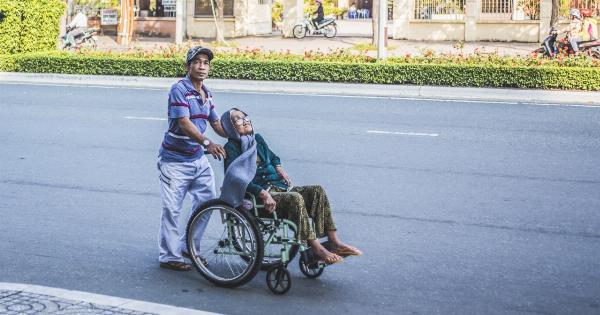Motion sickness, also known as travel sickness or kinetosis, can be a distressing and uncomfortable condition that affects a significant number of individuals.
Whether it’s during a car ride, boat trip, or even an amusement park ride, the sensation of motion can trigger a variety of unpleasant symptoms. In this article, we will delve into the science behind motion sickness and explore effective ways to combat it.
What Causes Motion Sickness?
In order to understand motion sickness, it is essential to grasp the basics of our vestibular system. This intricate system is responsible for maintaining our sense of balance and spatial orientation.
Located in our inner ear, it consists of fluid-filled canals and tiny hair-like structures called cilia. These cilia detect changes in head position or movement, allowing the brain to accurately interpret our body’s motion.
However, when we experience motion that conflicts with what our eyes or inner ear perceives, it leads to sensory conflict.
For example, when we are sitting inside a car or boat, our eyes may tell us that we are not moving, but our inner ear senses the motion. This discord between our senses results in an imbalance, leading to the onset of symptoms associated with motion sickness.
Common Symptoms of Motion Sickness
Motion sickness can manifest through a range of distressing symptoms, which may vary in intensity depending on the individual. Some common symptoms include:.
- Nausea
- Vomiting
- Dizziness or vertigo
- Cold sweats
- Headache
- Paleness
Preventing Motion Sickness
Prevention is often the key to managing motion sickness effectively. Here are some strategies that may help:.
1. Choose Your Seat Wisely
Opting for a seat with less motion can make a significant difference. In a car, this typically means sitting in the front seat and looking straight ahead. On a boat, position yourself in the center of the vessel, where the rocking motion is minimized.
2. Focus on the Horizon
Fixating on a stable point in the distance, such as the horizon, can provide your brain with a visual reference to help synchronize your senses. By doing so, you reduce the sensory conflict that often triggers motion sickness.
3. Keep Fresh Air Flowing
A well-ventilated environment can help alleviate symptoms of motion sickness. If possible, open a window, step out onto the deck of a boat, or take breaks for fresh air during long car rides.
4. Avoid Reading or Staring at Screens
Engaging in activities that require intense visual focus, such as reading a book or staring at a smartphone screen, can exacerbate motion sickness symptoms. Try to limit these activities or take frequent breaks to allow your senses to recalibrate.
Effective Remedies for Motion Sickness
If prevention measures fail to control motion sickness symptoms, several remedies can provide relief. These include:.
1. Ginger
Ginger has long been recognized for its anti-nausea properties. Consuming ginger in various forms, such as ginger candies, ginger tea, or ginger supplements, can help mitigate nausea and reduce the severity of other symptoms.
2. Acupressure
Applying pressure to specific points on your body, such as the P6 acupressure point located on your wrist, can relieve nausea associated with motion sickness.
Wristbands or wristbands with built-in pressure buttons are commonly available for this purpose.
3. Medications
If natural remedies do not suffice, over-the-counter or prescription medications can be considered. Antihistamines, such as dimenhydrinate or meclizine, are commonly used to prevent motion sickness symptoms.
However, it is essential to follow the instructions provided by your healthcare professional and be aware of potential side effects.
Conclusion
Motion sickness can significantly impact an individual’s ability to enjoy travel or certain activities.
By understanding the science behind motion sickness and using preventive measures, such as selecting a suitable seat and focusing on a stable point, it becomes possible to minimize its effects. Additionally, remedies like ginger, acupressure, or medication can provide relief if symptoms persist. Armed with this knowledge, individuals can approach their journeys with greater confidence and comfort.




























